Arnold, Michael L. 2008. Reticulate Evolution and Humans: Origins and Ecology. Oxford University Press.
Azlan, M.J. 2003. "The Diversity and Conservation of Mustelids, Viverrids, and Herpestids in a Disturbed Forest in Peninsular Malaysia." Small Carnivore Conservation 29:8-9.
Azlan, M.J.; Hon, J.; Duckworth, J.W.; Jennings, A.; and Veron, G. 2008. "Viverra tangalunga." In: IUCN 2014. International Union for Conservation of Nature and Natural Resources Red List of Threatened Species. Version 2014.1. Retrieved August 1, 2014.
- Available at: http://www.iucnredlist.org/details/full/41708/0
Bell, D.; Roberton, S.; and Hunter, P. R. 2004. "Animal Origins of SARS Coronavirus: Possible Links with the International Trade in Small Carnivores." Philosophical Transactions of the Royal Society of London, Series B, Biological Sciences 359:1107-1114.
Bisby, F.A.; Roskov, Y.R.; Orrell, T.M.; Nicolson, D.; Paglinawan, L.E.; Bailly, N.; Kirk, P.M.; Bourgoin, T.; Baillargeon, G.; and Ouvrard, D. (red.). 2011. "Viverra tangalunga Gray, 1832. Species 2000 & ITIS Catalogue of Life: 2011 Annual Checklist. Reading, UK. Retrieved August 1, 2014.
- Available at: http://www.itis.gov/servlet/SingleRpt/SingleRpt?search_topic=TSN&search_value=622004
Boelens, Bo; Watkins, Michael; and Grayson, Michael. 2009. The Eponym Dictionary of Mammals. Johns Hopkins University.
Boudet, Ch. 10 January 2009. "Species Sheet: Malayan Civet, Malay Civet, Oriental Civet." Mammals' Planet: Vs n°4, 04/2010. Retrieved August 1, 2014.
- Available at: http://www.planet-mammiferes.org/drupal/en/node/38?indice=Viverra+tangalunga
Boudet, Ch. 10 January 2009. "Subspecies Sheet: Langkawi Island Civet." Mammals' Planet: Vs n°4, 04/2010. Retrieved August 1, 2014.
- Available at: http://www.planet-mammiferes.org/drupal/en/node/39?indice=Viverra+tangalunga+lankavensis
Boudet, Ch. 10 January 2009. "Subspecies Sheet [Viverra tangalunga tangalunga]." Mammals' Planet: Vs n°4, 04/2010. Retrieved August 1, 2014.
- Available at:http://www.planet-mammiferes.org/drupal/en/node/39?indice=Viverra+tangalunga+tangalunga
Cassell's Universal Portrait Gallery: A Collection of Portraits of Celebrities, English and Foreign. With Facsimile Autographs. 1895. London, Paris & Melbourne: Cassell and Company, Limited.
- Available via Internet Archive at: https://archive.org/details/cassellsuniversa00londiala
Colón, C. P. 1999. Ecology of the Malay Civet (Viverra tangalunga) in a Logged and Unlogged Forest in Sabah, East Malaysia. PhD dissertation. New York, NY: Fordham University.
Colon, C. P. 2002. "Ranging Behaviour and Activity of the Malay Civet (Viverra tangalunga) in a Logged and an Unlogged Forest in Danum Valley, East Malaysia." Journal of Zoology (London) 257:473-485.
Corbet, G.B.; and Hill, J.E. 1992. Mammals of the Indo-Malayan Region: A Systematic Review. Oxford, U.K.: Oxford University Press.
Dannenfeldt, K.H. 1985. "Europe Discovers Civet Cats and Civet." Journal of the History of
Biology 18:403-431.
Driver, Stephanie (ed.). 2008. Exploring Mammals, Volume 3. Tarrytown, NY: Marshall Cavendish Corporation.
Duff, Andrew; and Lawson, Ann. 2004. Mammals of the World: A Checklist. Yale University Press.
Ewer, R.F. 1998. The Carnivores. Cornell University Press: Cornell Paperbacks.
Francis, Charles M. 1 January 2008. A Field Guide to the Mammals of South-East Asia. New Holland Publishers.
Gaubert, P.; and Cordeiro-Estrela, P. 2006. “Phylogenetic Systematics and Tempo of Evolution of the Viverrinae (Mammalia, Carnivora, viverridae) within Feliformians: Implications for Faunal Exchanges between Asia and Africa.” Molecular Phylogenetics and Evolution 41:266-278.
Gervais, Paul. 1855. Histoire naturelle des Mammifères: Carnivores, Proboscidiens, Jumentés, Bisulques, Édentés, Marsupiaux, Monotrèmes, Phoques, Sirénides et Cétacés. Paris: L. Curmer.
Gittleman, John L.; Funk, Stephan M.; Macdonald, David; and Wayne, Robert K. (eds.). 2001. Carnivore Conservation. Cambridge University Press: Conservation Biology 5.
Gray, J. E. 1864. "A Revision of the Genera and Species of Viverrine Animals (Viverridae), Founded on the Collection in the British Museum." Proceedings of the Zoological Society of London 502–579.
- Available via Internet Archive at: http://archive.org/stream/proceedingsofgen64zool#page/512/mode/2up
Hayssen, Virginia; Van Tienhoven, Ari; and Van Tienoven, Ans. Asdell’s Patterns of Mammalian Reproduction: A Compendium of Species-Specific Data. Cornell University, 1993.
Heydon, M.J.; and Bulloh, P. 1996. The Impact of Selective Logging upon Sympatric Civet
Species (Viverridae) in Borneo." Oryx 30:31-36.
Hunter, Luke; and Barrett, Priscilla. 2011. A Field Guide to the Carnivores of the World. London, Cape Town, Sydney, Auckland: New Holland Publishers (UK) Ltd.
Jennings, A. P.; and Veron, J. 2009. "Family Viverridae (Civets, Genets, and Oyans)." In: Don E. Wilson and Russel Mittermeier (Hrsg.) Handbook of the Mammals of the World Volume 1: Carnivores. Lynx Edicions.
Jennings, A. P.; Seymour, A. S.; and Dunstone, N. 2006. "Ranging Behaviour, Spatial Organisation, and Activity of the Malay Civet (Viverra tangalunga) on Buton Island, Sulawesi." Journal of Zoology (London) 268:63-71.
Jennings, A.P.; Zubaid, A.; and Veron, G. 2010. "Ranging Behaviour, Activity, Habitat Use, and
Morphology of the Malay Civet (Viverra tangalunga) on Peninsular Malaysia and Comparison
with Studies on Borneo and Sulawesi." Mammalian Biology 75:437-446.
Kitchener, A.; Clegg, T.; Thompson, N.; Wilk, H.; and MacDonald, A. 1993. "First Records of the Malay Civet, Viverra tangalunga Gray, 1832, on Seram with Notes on the Seram Bandicoot Rhynchomeles prattorum Thomas, 1920." International Journal of Mammalian Biology 58:378-380.
Kondo, H.; Tesar, J.; Cloud, D.; Kagan, L. (eds.). 1972. Civets, Genets, and Linsangs, Volume 2, 3rd Edition. Milan: Fratelli Fabbri Editori.
Larivière, Serge. 2004. "Civets, Genets, and Linsangs (Viverridae)." Pp. 335-339 in Grzimek's Animal Life Encyclopedia, Second Edition. Volume 14: Mammals III, edited by Michael Hutchins, Devra G. Kleiman, Valerius Geist, and Melissa C. McDade. Farmington Hills, MI: Gale Group, Inc., division of Thomson Learning Inc.
Lim, N.T.; and Ouyang, X. 2012. "Occurrence of the Malay Civet, Viverra Tangalunga (Mammalia: Carnivora: Viverridae) in Singapore." Nature in Singapore 5:79-81.
Lundrigan, Barbara; and Harris, Julie. 2000. "Viverra tangalunga: Malayan Civet (On-line)." Animal Diversity Web. University of Michigan Museum of Zoology. Retrieved August 1, 2014.
- Available at: http://animaldiversity.ummz.umich.edu/accounts/Viverra_tangalunga/
Lydekker, Richard. 1896. A Hand-book to the Carnivora, Part I. Cats, Civets, and Mungooses. London, England: Edward Lloyd, Limited: Lloyd's Natural History Edited by R. Bowdler Sharpe.
- Available via Internet Archive at: http://archive.org/stream/handbooktocarniv00lydekke#page/238/mode/2up
Majerus, Kara. 27 September 2011. "I'm a Civet: Get Me Out of Here!" The Naked Scientists: Articles > Biology. University of Cambridge. Retrieved August 1, 2014.
- Available at: http://www.thenakedscientists.com/HTML/articles/article/i-m-a-civet-get-me-out-of-here/
"Malay Civet (Viverra tangalunga)." ARKive: Species > Mammals. Retrieved August 1, 2014.
- Available at: http://www.arkive.org/malay-civet/viverra-tangalunga/image-G135896.html
"Malay Civet (Viverra tangalunga)." SAFE: Stability of Altered Forest Systems. Retrieved August 1, 2014.
- Available at: http://www.safeproject.net/animal-sightings/malay-civet-viverra-tangalunga/
"Malayan Civet." Thai National Parks: Species of Thailand > All Mammals. Retrieved August 1, 2014.
- Available at: http://www.thainationalparks.com/specie/malayan-civet
“Malayan Civet Pictures and Facts.” The Website of Everything: Animals > Mammals > Carnivora > Viverridae > Hemigalinae > Chrotogale. Retrieved August 1, 2014.
- Available at: http://thewebsiteofeverything.com/animals/mammals/Carnivora/Viverridae/Viverra/Viverra-tangalunga.html
"Malayan Civet (Viverra tangalunga)." A-Z Animals. Retrieved August 1, 2014.
- Available at: http://a-z-animals.com/animals/malayan-civet/
"Malayan Civet, Viverra tangalunga." redOrbit: Reference Library > Mammals. Retrieved August 1, 2014.
- Available at: http://www.redorbit.com/education/reference_library/animal_kingdom/mammalia/1112868316/malayan-civet-viverra-tangalunga/
Meijaard, E. (ed.). 2005. Life After Logging: Reconciling Wildlife Conservation and Production Forestry in Indonesian Borneo. Center for International Forestry Research.
Meyer, A.B. (Adolf Bernhard). 1896. Säugethiere vom Celebes- und Philippinen-Archipel. I. Abhandlungen und Berichte des Königlichen Zoologischen und Anthropologisch-Ethnographischen Museums zu Dresden 1896/1897, Nr. 6 & 7. Berlin: R. Friedländer & Sohn.
- Available via Internet Archive at: https://archive.org/details/sugethierevomc00meyerad
Myers, P.; Espinosa, R.; Parr, C.S.; Jones, T.; Hammond, G.S.; and Dewey, T.A. 2014. “Viverra tangalunga: Malayan Civet (On-line).” The Animal Diversity Web. University of Michigan Museum of Zoology. Retrieved August 1, 2014.
- Available at: http://animaldiversity.ummz.umich.edu/accounts/Viverra_tangalunga/classification/#Viverra_tangalunga
- Available at: http://animaldiversity.ummz.umich.edu/accounts/Viverra_tangalunga/specimens/
Nowak, Ronald M. 1999. Walker's Mammals of the World, Sixth Edition. Volume I. Baltimore: Johns Hopkins University Press.
Schreiber, A.; Wirth, R.; Riffel, M.; and Van Rompaey, H. 1989. Weasels, Civets, Mongooses, and Their Relatives. An Action Plan for the Conservation of Mustelids and Viverrids. Gland, Switzerland: IUCN.
Veron, Geraldine. 2010. “Phylogeny of the Viverridae and ‘Viverrid-like’ Feliforms.” Pp. 64-90 in Carnivoran Evolution: New Views on Phylogeny, Form and Function edited by Anjali Goswami and Anthony Friscia. Cambridge University Press: Cambridge Studies in Morphology and Molecules.
"Viverra tangalunga (Malay Civet)." ZipcodeZoo: Species Identififer 134478. Retrieved August 1, 2014.
- Available at: http://zipcodezoo.com/Animals/V/Viverra_tangalunga/
"Viverra tangalunga: Malayan Civet." Encyclopedia of Life. Retrieved August 1, 2014.
- Available at: http://eol.org/pages/328107/details
Wemmer, Chris; and Watling, Dick. 1986. "Ecology and Status of the Sulawesi Palm Civet Macrogalidia musschenbroekii schlegel." Biological Conservation 35(1):1-17.
Wilson, Don E.; and Cole, F. Russell. 2000. Common Names of Mammals of the World. Washington, D.C.: Smithsonian Institution Press.
Wilson, Don E.; and Reeder, DeeAnn M. (editors). 2005. Mammal Species of the World: A Taxonomic and Geographic Reference (3rd ed), Johns Hopkins University Press.
Wood, J.G. (John George). The Illustrated Natural History, vol. I Mammalia. London: Routledge, Warne, and Routledge, 1859.
- Available via Biodiversity Heritage Library at: https://www.biodiversitylibrary.org/page/15491223
Wrobel, Murray (Editor). 2007. Elsevier's Dictionary of Mammals: Latin English German French Italian. Oxford, U.K.: Elsevier B.V.


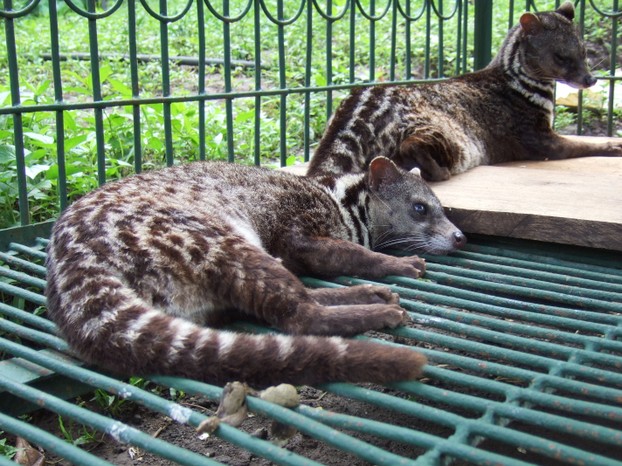
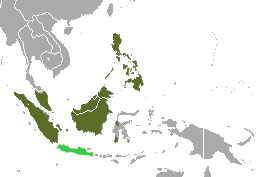

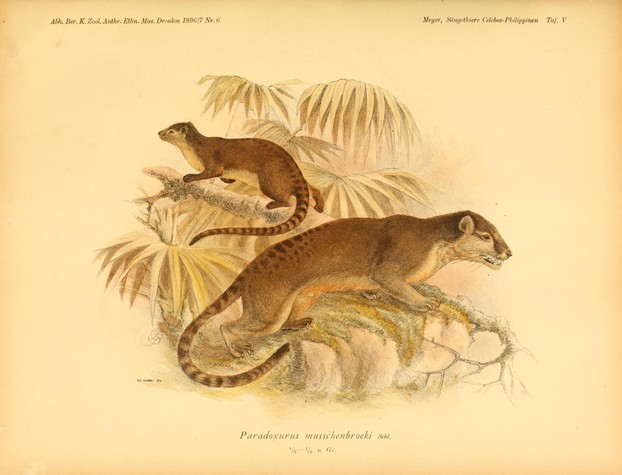
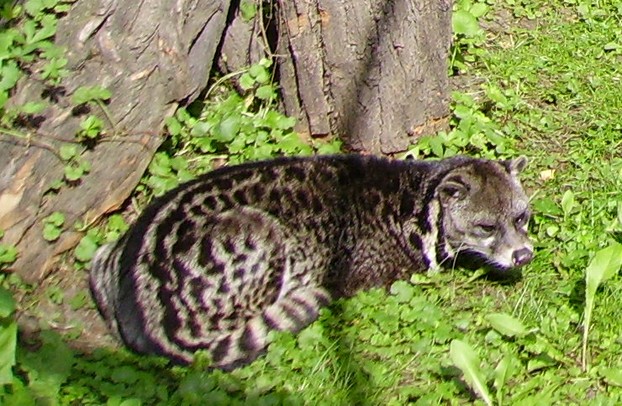
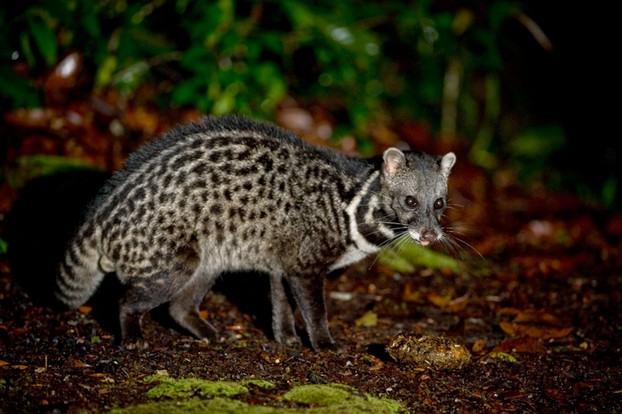
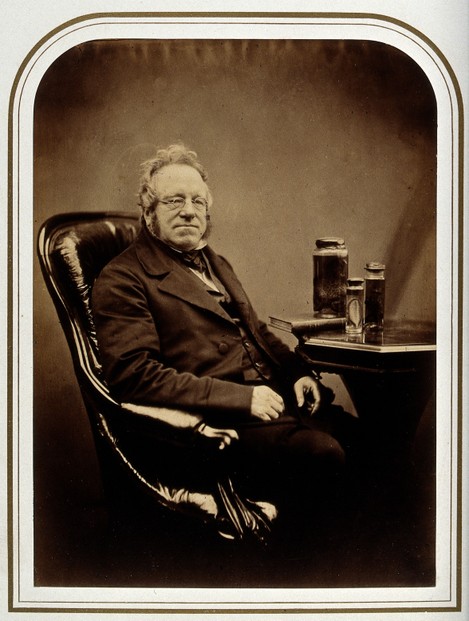
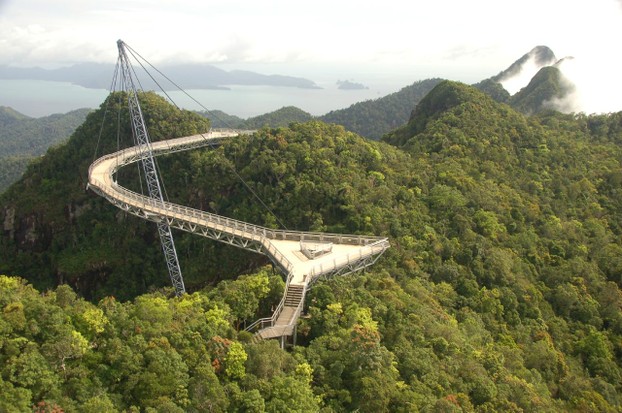
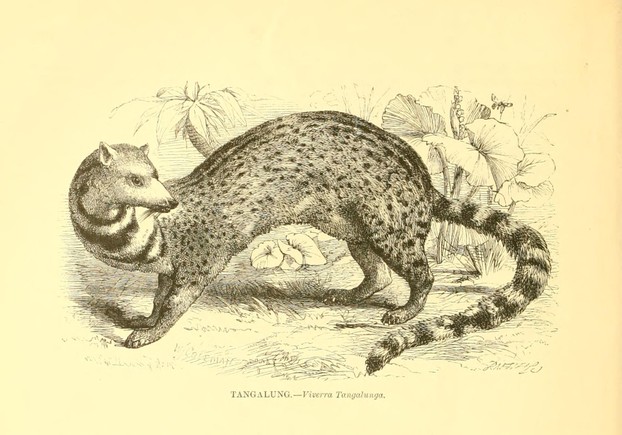






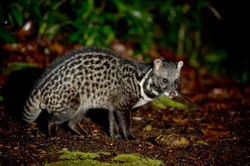

 Are Hawaiian Huakai Po Nightmarchers Avenging Halloween Thursday?on 10/02/2024
Are Hawaiian Huakai Po Nightmarchers Avenging Halloween Thursday?on 10/02/2024
 Mailing Addresses for 2023 Form 4868 Extending 1040 and 1040SR April 15, 2024, Due Dateon 04/15/2024
Mailing Addresses for 2023 Form 4868 Extending 1040 and 1040SR April 15, 2024, Due Dateon 04/15/2024
 Mailing Addresses for 2023 Forms 1040 and 1040SR Filed in 2024on 04/15/2024
Mailing Addresses for 2023 Forms 1040 and 1040SR Filed in 2024on 04/15/2024
 Mailing Addresses for 2022 Form 4868 Extending 1040 and 1040SR April 18, 2023, Due Dateon 04/13/2023
Mailing Addresses for 2022 Form 4868 Extending 1040 and 1040SR April 18, 2023, Due Dateon 04/13/2023

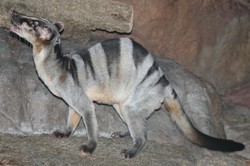
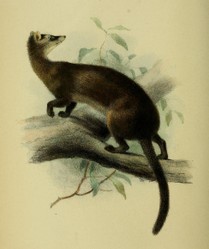
Comments